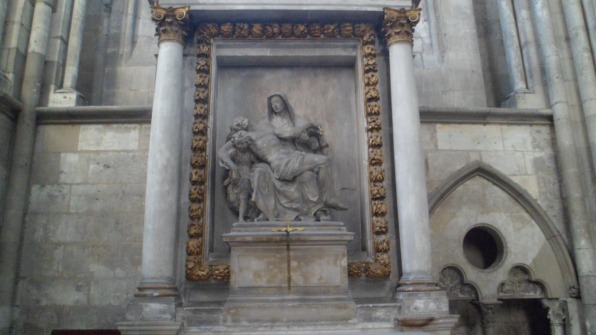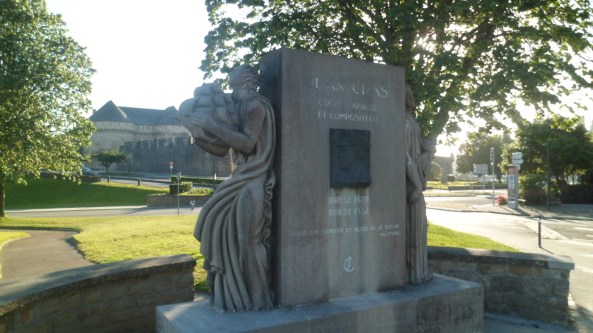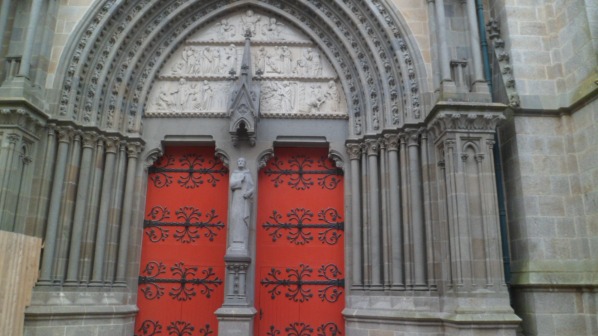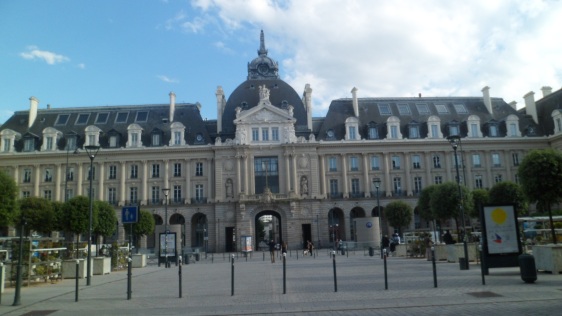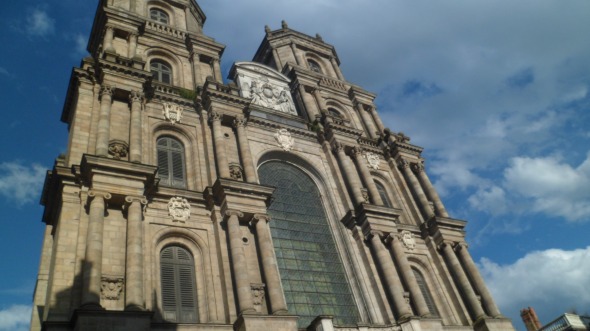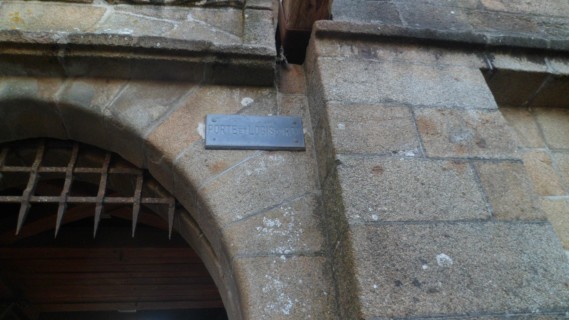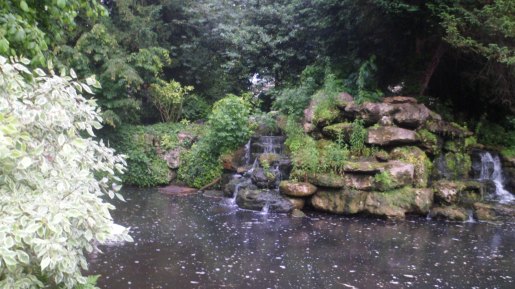June 13, 2014, Rouen- It was a bright and sunny morning in Rouen. I declined breakfast at the hotel, but headed down to Square Verdril, to check on my swan friends. The cygnets had grown a bit, over the past week.
They were a bit more amenable to eating the bread I had carried, this time.
That done, I headed to L’Eglise Saint-Maclou, where I chanced upon a couple from Florida. The husband advised me as to a good, durable money belt, which I picked up at a store, a bit later.
Here is Maclou, from the outside. The interior was closed.
On the sidewalk, as I left the church, was an affirmation. Those who are my faithful readers will not be surprised.
I drifted down the road a bit, and had a look at the banks of the Seine- as vital to Rouen as it is to Paris.
Looking back, I realized my time here was getting short.
So, I went and checked the time- at Le Gros Horloge, the clock tower.
It was time for one last homage to Jeanne d’Arc.
I entered Le Donjon, actually a castle built in 1204, for Philippe- Auguste, the first monarch to style himself, King of France. It became a place of confinement for St. Joan, upon her capture by the forces of English King Henry VI. It was also where his henchmen forcibly changed her garments into those of a man, which in essence broke her agreement with the monarch. This gave him the pretext to order her immolation, and the French clergy in his employe carried out the immolation at Vieux Marche, as we have seen.
After mounting these steps,
I stood alone, in front of this mosaic, and felt St. Joan’s presence, offering a connection across the centuries.
I have felt bonds with the long deceased before- last year, with unnamed soldiers at Gettysburg, two years ago, with long-dead Comanche people in Palo Duro Canyon, and years ago, with Cochise, in the Stronghold that bears his name. These are a bit beyond the links I feel with departed family and friends, but are very similar. A recent visitor to Prescott said that, in eternity, one has relationships with those closest to self, then with all those one knows in this life, then with all those who lived during one’s lifetime- and lastly, with all those who have ever lived. These feelings fall within that last category, even as I am very much in the flesh.
Contemplating her suffering, and her love for God, brought me to tears in that spot.
She has had many feel the same way, through the centuries.
I wondered, when entering the last room of her confinement, what went through her mind. The answer came back- peace, and surety.
I went outside again, after about twenty minutes, and looked again, at this tower, built to establish the national identity of France, yet used so mockingly by those who sought to bring the country to heel.
Fittingly, the French have turned the tables, and today this tower is also a memorial to those who were persecuted during World War II.
Now, as then, a small cat observes all that transpires.
My time in this ancient place of origin was done. I checked out of Hotel Le Morand, waited for about two hours at the train station, and after several minutes of spirited discussion between SNCF officials in Rouen and a union big wig in Paris, it was decided I would proceed to Gare St. Lazare, then go to Gare du Nord, and catch a train to Amiens. That whole process took three hours, one of which was spent in a Metro car at St. Lazare, while other union bosses pondered whether they would even ALLOW the car to go to Gare du Nord. My French and African fellow travelers did enough fussing and fuming for all of us, and we were PERMITTED to go, after a full hour. I got to Amiens in less time than I spent in Paris waiting for the Chef de Travaille to get off his high horse.
Fortunately, the stationmaster’s assistant in Rouen had called my hotel in Amiens, on my behalf, and the dear clerk at Appart’city Amiens stayed at her desk for two extra hours, until four of us arrived from Paris. As you can see, this hotel is fairly new, still a work in progress, and was the largest hotel in which I stayed on this trip.
Exhausted, but gratified, I bid adieu to Friday the 13th.






































